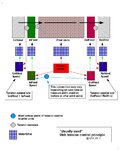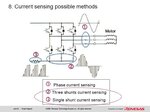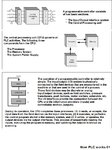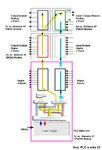kak111
Advanced Member level 4

I could not find any documents or information about this machine
in order to be able to answer questions,
I need to know the machine structure and see the control block diagram
one another.
This is usually used tension control principle..............

Tension control in print units depends on manufacturer system design,
it can be done via tension measure before or after print units and
control decrease infeed speed or increase outfeed speed.
( Can´t say without machine tech. documents )
How the speed is measured, have you any instructions for calibration the speed measuring system.
( Wrong speed feedback can cause the problem. )
Motor VFD`s principle of operation is chosen by the manufacturer and matched to the other components of the control system.
If changing them , can lead to severe problems.
KAK
in order to be able to answer questions,
I need to know the machine structure and see the control block diagram
Do not alter the factory settings, because all the control parameters are dependent oncan we change the frequency controlling method of the inverter(s) in such a way that there's no problem in web tensioning process ?
one another.
This is usually used tension control principle..............

Tension control in print units depends on manufacturer system design,
it can be done via tension measure before or after print units and
control decrease infeed speed or increase outfeed speed.
( Can´t say without machine tech. documents )
Also the main motor is starting when the speedometer on the digital screen shows the speed of 5 m/min , although it was starting as the speed increased from 0 to 1 m/min , why is it so ?
How the speed is measured, have you any instructions for calibration the speed measuring system.
( Wrong speed feedback can cause the problem. )
Motor VFD`s principle of operation is chosen by the manufacturer and matched to the other components of the control system.
If changing them , can lead to severe problems.
KAK
Last edited:







